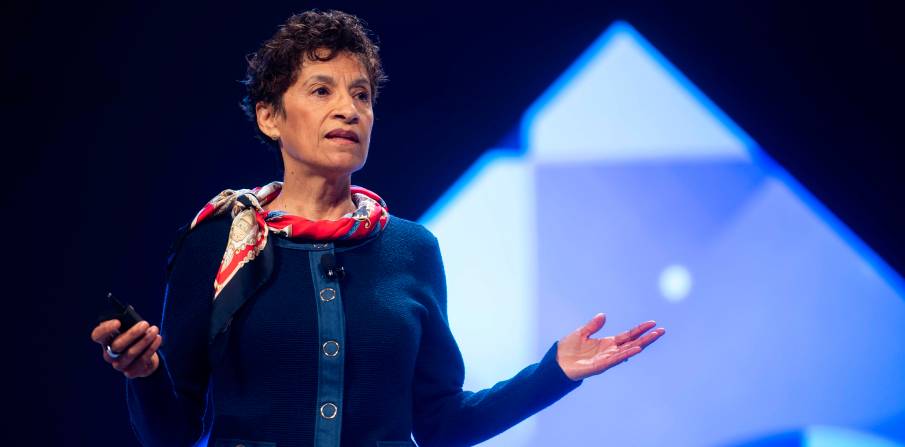04 May 2022
CIMBC22 conference chair Doris Hiam-Galvez presented Wednesday’s keynote “Mining Roadmap for Future Generations”
By Sarah St-Pierre
What does the future of mining look like? The question is more easily asked than answered. Delivering the keynote speech Wednesday morning at CIMBC22, conference chair and Hatch senior advisor Doris Hiam-Galvez proposed a roadmap for the industry’s future generations, advising that mining move from the “slow road” to the fast one towards a sustainable future.
Hiam-Galvez identified three major efforts to her “fast road” paradigm, the first of which was designing sustainable prosperity (DSP). DSP, as she defined it, is the process through which the mining industry can be the catalyst for building strong, diverse economies within local mining communities — economies that will be resilient to the departure of mining companies at mine closure.
And how to go about designing sustainable prosperity? According to Hiam-Galvez, an integrated resources model is the way. By laying out what the desired future looks like, questions of water, energy, natural resources, infrastructure and waste management can be tackled purposefully. “Once [we] have an idea of what’s possible, then we have to adapt the educational system to support those industries,” she said.
The second component to getting onto the “fast road” is to re-think mining. For that, geoscience will be the key, said Hiam-Galvez, “because everything starts in the ore body.” Tailored solutions for every deposit are at the core of improving efficiency and doing less handling. Creating value from waste is another area of potential. Automation must also be considered, but not automating obsolete traditional processes. The industry needs to first rethink and optimize processes, said Hiam-Galvez, then automate.
The third and final approach Hiam-Galvez stressed was adaptive change. Building an adaptive culture starts with leadership that is not afraid of uncertainty and that can create teams who innovate and cultivate creativity. “We learn how to think differently, and that changes everything,” she said.
In the Q&A period, attendees voiced their concerns about the skills gap the industry is facing. Hiam-Galvez believes education is the root cause for the skills shortage. “There’s a gap between schools, universities and industry, and I think we need to rethink education, [to] prepare our youth and the new professionals to be ready for work,” she said. An important challenge she noted was to keep young people interested by providing them with practical knowledge that reflects mining's future needs and approaches.
Ultimately, the path forward to attracting and retaining key talent will intersect with moving mining onto the fast road. Creating vibrant local economies, improving the environment as opposed to negatively impacting it and improving the quality of life for communities around mining operations will create a new face for the industry. “We have to make our business more exciting and we have, I believe, everything in our hands to do that,” Hiam-Galvez said.
 - dev.png)


